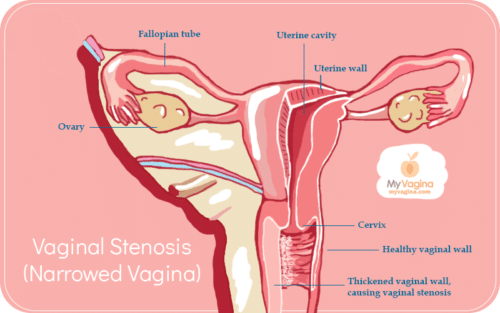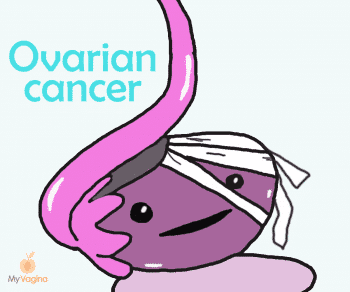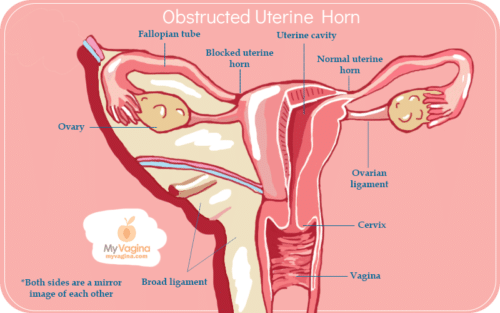Corpus luteum cyst (a functional ovarian cyst)
A corpus luteum cyst is most often a benign ovarian cyst caused by the process of ovulation that will resolve itself over a period of weeks. These ovarian cysts are benign, which means they are not dangerous.
Vaginal dilators and dilation
We discuss the uses of vaginal dilators, including recommendations by experts on how to use dilators. Dilators are used in women whose vaginal canals have shrunk and thickened, or were not large to start with. There are many conditions that benefit from gradual stretching of the vagina.
Radiation-induced vaginal stenosis (narrowing of the vagina)
Narrowing of the vagina (vaginal stenosis) can occur as a result of cancer treatments. A narrow vagina can cause a few issues, in particular sexual issues, since proper penetration can't occur without pain or discomfort. Vaginal stenosis also causes issues with vaginal examinations, period flow, and giving birth.
Study: OVERcome (olive oil, vaginal exercise and moisturiser) – alleviating sexual problems in women with breast cancer
A combination of olive oil, vaginal moisturiser and pelvic-floor relaxation exercises was tested and works well for women suffering sexual problems after breast cancer treatments.
Review: Fem-Dophilus probiotics
A review of Jarrow's range of L. crispatus-containing probiotics for vaginal health.
Vaginal mullerian cysts
Mullerian cysts are caused either by an anatomical hiccup or appear after trauma to the vagina, such as might occur during childbirth. Mullerian cysts are benign, but can range in size from very small to extremely large and uncomfortable.
Scleroderma and your sex life
Scleroderma can present some challenges to women when it comes to sex and enjoying your vagina, with not much research into this aspect of a scleroderma diagnosis.
Ovarian cancer
There are two main types of ovarian cancers, with survival rates variable depending largely on what stage the cancer is discovered at.
Uterine cancers (sarcoma)
A uterine sarcoma is a highly malignant type of cancer that forms in the uterus, making up 5% of uterine cancers.
Candida (yeast) sensitivity or allergy in the vulva or vagina
A yeast allergy can manifest in the vagina and vulva causing itching and burning, but be totally missed by your doctor since tests may be negative.
Squamous cell vulvar cancer
Squamous cell vulvar cancers are becoming less lethal as treatments improve.
Vulvar cancers
Vulvar cancers are reasonably rare for the most part, but usually get diagnosed late, making vulvar cancer more deadly than it ought to be. Vulva cancer may be innocuous in its symptoms, which makes regular pelvic exams more important than ever, especially as we age.
Vulvar or vaginal melanoma
Vulvar and vaginal melanoma is a rare form of gynaecological cancer affecting the melanin-producing cells under our skin, the melanocytes. Melanomas tend to be pigmented spots on the skin that look unusual, but we can easily miss them on our vulva or vagina.
Pemphigus vulgaris
Pemphigus vulgaris is an autoimmune condition that affects the mucous membranes, including the vagina and vulva. If left untreated, pemphigus vulgaris can be fatal.
Obstructed uterine horn
An obstructed uterine horn is an anatomical abnormality whereby the uterus is not connected properly with the fallopian tubes.
Neisseria meningitidis (Meningococcal disease)
This bacterial infection can cause urethritis, vaginal bleeding, inflammation and vaginitis.
Mucous membrane pemphigoid
Mucous membrane pemphigoid is an autoimmune condition that affects mucous membranes, including those of the vulva. Mucous membrane pemphigoid can also affect the eyes, causing blisters to appear.
Intertrigo – a rash in your creases
Intertrigo is a skin rash that has a few different causes, from infections to inflammation, but typically accumulates in creases. Over time, the skin in the creases can start to crack and become weepy/moist, and become infected.
The hymenal ring, remnants and tags
Hymenal rings and tags are completely normal, however can be a source of discomfort, pain and embarrassment for some of you.
Gestational trophoblastic disease (molar pregnancy)
A molar pregnancy is characterised by a positive pregnancy test, but the growing foetus is actually a tumour. There is actually no foetus present at all, and the pregnancy would never have been viable.






